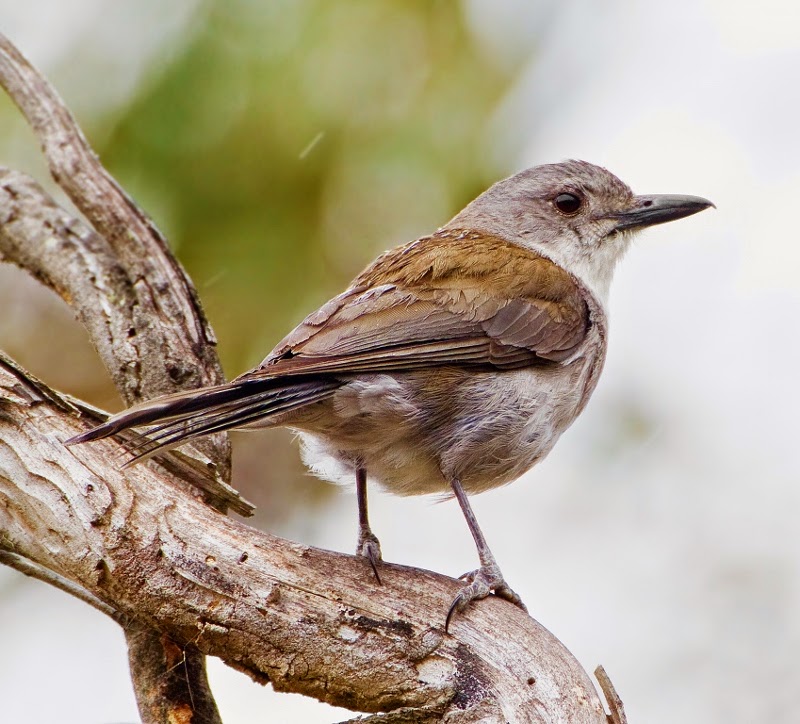 |
| Photo by J.J. Harrison (Wikipedia) |
Common name:
grey shrike-thrush (en); pitohui-cinzento (pt); pitohiu gris (fr); picanzo gris (es); graubrustpitohui (de)
Taxonomy:
Order Passeriformes
Family Pachycephalidae
Range:
This species is found throughout Australia, including Tasmania, and also in eastern and southern New Guinea.
Size:
These birds are 22-25 cm long and weigh 58-74 g.
Habitat:
The grey shrike-thrush is found in a wide range of wooded habitats, particularly dry savannas and forests dominated by Eucalyptus and Acacia, mangroves, scrublands, plantations, pastures, arable land and urban areas.
Diet:
They feed mainly on insects, also taking spiders and millipedes, small lizards, frogs, small mammals, bird eggs and chicks and even carrion. Occasionally, also fruits and seeds.
Breeding:
These birds breed in July-March. They are monogamous and may pair for life, with both sexes helping build the nest, a bowl made of dry leaves and bark strips, and lined with grass. the nest is placed on the ground, usually hidden between grass tussocks or near the base of a scrub, in dense undergrowth. The female lays 2-4 creamy eggs with brown speckles, which are incubated by both parents for 16-18 days. The chicks are fed by both parents and fledge 14-17 days after hatching.
Conservation:
IUCN status – LC (Least Concern)
This species has a very large breeding range and is reported to be fairly common to scarce. The population is suspected to be increasing as ongoing habitat degradation is creating new areas of suitable habitat.







